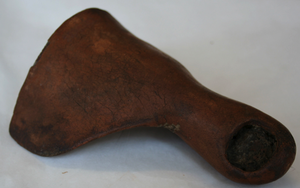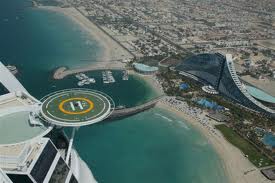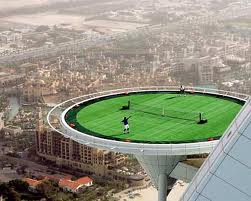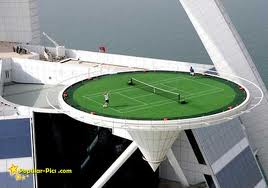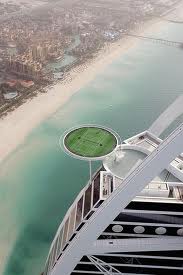NextEra Energy Resources thought it had a golden project.
Eleven solar thermal farms have been proposed for Southern California and are going through the permitting process with the California Energy Commission and with the U.S. Bureau of Land Management if on federal land. The 11 farms are among the biggest of the almost 50 renewable energy projects seeking to begin construction in California before the end of the year so they can seek federal stimulus funds.
The company proposed a 2,000-acre solar farm, named Beacon, on fallow agricultural land on the edge of California’s Mojave Desert. The site has the great desert sun but is on degraded land near a freeway, an auto test track and old buildings.
 The site “is exactly where solar should be,” says David Myers, head of conservation group Wildlands Conservancy.
The site “is exactly where solar should be,” says David Myers, head of conservation group Wildlands Conservancy.
But two years later, NextEra still awaits permission to begin construction from the California Energy Commission, which grants permits on such projects after environmental reviews. Time is running short, not only for NextEra but for several dozen green-energy projects in California. Ground must be broken on them before year’s end to get federal stimulus funds worth 30% of the projects’ cost.
The deadline — and the push for green energy by President Obama and California Gov. Arnold Schwarzenegger— has inspired unprecedented coordination among regulators and environmentalists who want green energy but not rampant destruction of wilderness. If they succeed in siting so many large solar projects quickly, California may set a precedent for how other states resolve concerns over land use vs. the benefits of green energy.
“It’s a scene that’s being played out all over the country,” says Benjamin Kelahan, senior vice president for energy of the Saint Consulting Group. But California, he says, is “a hotbed of activity.”
Yet the sheer number and size of the California projects, especially a dozen huge solar farms unlike anything regulators have reviewed in 20 years, is stressing agencies and stakeholders alike. No other state has so many huge solar projects in the pipeline. Billions of dollars in stimulus funds ride on whether the permitting process can be sped up without sacrificing California’s stringent environmental standards.
No corners are being cut, regulators say. But some environmentalists fear that the tight deadlines will lead to projects that could’ve been better with more time. And companies say that some projects, like NextEra’s, have suffered delays born of inefficient permitting.
“These are large projects at a scale we’ve never seen before on a time schedule that’s never been done before,” says Kimberley Delfino, California program director for the environmental group Defenders of Wildlife. “This is not going to be an easy thing to do.”
Promise of power, jobs
If all are built, the 49 projects seeking stimulus funding would generate 11,000 megawatts of electricity a year. That’s enough to supply 7 million California homes and give California utilities a big boost in meeting mandates to get 33% of their energy from renewable sources by 2020.
The projects also would drive 10,000 construction jobs, 2,200 operational jobs and up to $30 billion in investment, including up to $10 billion in federal stimulus dollars, says Michael Picker, Schwarzenegger’s renewable-energy adviser.
Twenty-two of the 49 projects account for 83% of the power. Some projects fall under the permitting process of counties. But the vast majority of the large solar projects fall under the review of the California Energy Commission and, if the projects are on federal land, the U.S. Bureau of Land Management.
California and federal regulators are working under conditions far from the norm.
Typically, the California Energy Commission rules on seven power plants a year, most often 20- to 40-acre natural-gas plants. This year, it has almost three dozen projects to review, including 11 large solar farms, several of which will each cover 10 square miles of land. Some projects that would normally take two years to review are seeking eight- to nine-month turnarounds, says Tom Pogacnik, a deputy state director for the Bureau of Land Management.
Never before have the bureau and the commission worked so closely to coordinate and expedite project reviews, says Terrence O’Brien, commission deputy director. He’s dubbed a fourth-floor conference room a “war room,” where staffers meet weekly to set priorities.
In November, commission staffer Christopher Meyer noted that the staff was already “sort of at a breaking point” with the workload, a transcript of a hearing on one of the solar farms says.
More people have since been hired. At the commission, 110 employees work on siting projects, up 25% since the fall. And while other state workers face furloughs on some Fridays, a consequence of California’s budget woes, “We’re working,” O’Brien says.
The agencies are “tearing their hair out,” says Peter Weiner, who, at law firm Paul Hastings, represents solar developers.
Moving too fast or too slow?
Whether the permitting process is fast or slow, complete or subpar depends on who’s talking — and when.
In January, NextEra thought its chances were “grim” to get the $1 billion Beacon project through the process in time to qualify for $300 million in federal cash grants that are given instead of tax credits as part of the stimulus program, says Matthew Handel, NextEra vice president.
At a January hearing before the California Energy Commission, NextEra unfurled a string of complaints about the process. The Beacon site had to have a plan to relocate desert tortoises, although the site “has no desert tortoises,” NextEra’s Scott Busa said. The company had to redo a plan five times to monitor ravens that prey on baby tortoises, although the solar fields would draw fewer ravens than the sheep that currently graze and sometimes die on the land, providing a “raven buffet,” Busa said.
 He also said state regulators gave NextEra a 382-day plan to offset any effect on Native American cultural resources on the site, when the company didn’t have 382 days before it had to break ground to get stimulus funding.
He also said state regulators gave NextEra a 382-day plan to offset any effect on Native American cultural resources on the site, when the company didn’t have 382 days before it had to break ground to get stimulus funding.
Given that the site was considered almost “perfect” for solar, Busa said, “I wonder why we’re here two years later?”
After the hearing, the state reduced some demands. For instance, it cut the 382-day plan to 180 days by reducing how much land needed to be surveyed, Busa says. “They’ve recognized they’re under time constraints,” he says.
NextEra, a subsidiary of the Florida-based FPL Group energy company, is now optimistic the project will make the Dec. 31 deadline.
The commission’s O’Brien says he also wishes that Beacon’s review had gone faster. But he says part of the blame rests with NextEra, which at first proposed using fresh groundwater despite commission opposition. “It wasn’t a perfect project, and it took time to resolve the issues,” O’Brien says.
Home to threatened species
NextEra is proposing one of 11 large solar thermal farms. The farms concentrate the sun’s power on mirrors to produce heat used to generate electricity. They’ll cover thousands of acres, many of them largely untouched desert. The region has the most intense sun in North America, but it’s also home to threatened species, such as the desert tortoise, and rare plants.
Environmentalists, who’re largely supportive of solar, still worry that environmental reviews will be rushed.
“We need to proceed with caution, and what the stimulus deadline has done is remove our ability to do that,” says Gloria Smith, an attorney for the Sierra Club in San Francisco.
Last week, the Sierra Club faced a two-day deadline to respond to information presented at an all-day hearing on one solar farm. After it complained, the response time was set at eight business days. Typically, it’d be weeks, Smith says.
Some agency reports also lack information they’d normally have, says Joshua Basofin, California representative for Defenders of Wildlife. This month, the commission and the Bureau of Land Management filed their joint environmental review on the 6,500-acre Blythe Solar Power Project. At the filing, numerous issues were unresolved, including relocating desert tortoises and offsetting damage to burrowing owl habitat and Native American cultural resources.
“We’re very concerned that there hasn’t been comprehensive environmental analysis for some of these projects,” Basofin says.
The commission’s O’Brien says environmental reviews will be complete. If first reports lack data, the agencies will file supplements, he says.
Several of the projects have changed to reduce their effects on the environment. The Ivanpah solar farm, at 3,500 acres, shrank 12% to lessen damage to desert tortoise and rare plant habitat. The Imperial Valley Solar farm, at 6,000-acres, is 16% smaller than originally proposed to avoid an area especially rich in Native American resources around land that was once an ancient lake.
Next few months are critical
Project developers are hopeful that the deadline for 30% cash grants will be extended, as Sen. Dianne Feinstein, D-Calif., has proposed in legislation. “But nobody wants to count on an extension,” says Sean Gallagher, vice president of Tessera Solar, which has two projects. The stimulus funds “are a critical part of the financing,” Gallagher adds.
The next few months are also critical. Companies need permits by fall to have time to finalize financing and transmission plans. Picker, of the governor’s office, expects up to 75% of the larger projects will get permits in time.
While some environmentalists say those may not be as well-designed as they could be, leading groups also recognize that land conservation isn’t the only factor to consider. Global warming will degrade even pristine land, says environmentalist Delfino. Greener energy is a way to fight back, leading her to conclude that some habitat destruction is worth a bigger “long-term” gain.
“But we cannot have the cure be worse than the disease,” Delfino says.



